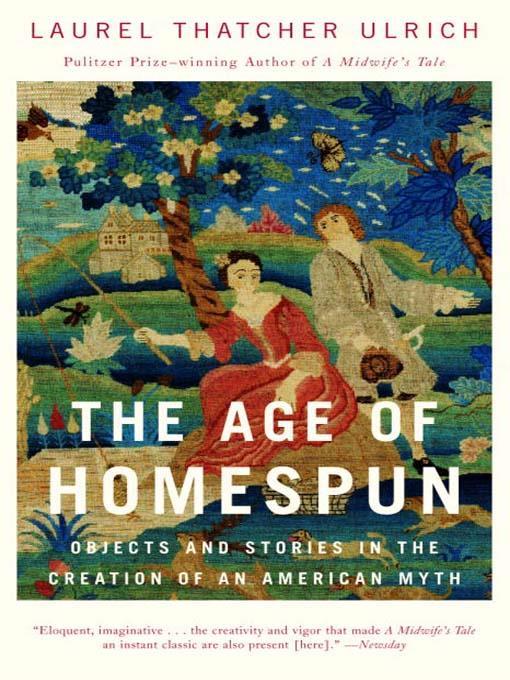
The Age of Homespun
Objects and Stories in the Creation of an American Myth
کتاب های مرتبط
- اطلاعات
- نقد و بررسی
- دیدگاه کاربران
نقد و بررسی

October 1, 2001
In 1851, when theologian Horace Bushnell stood on the village green in Litchfield, Conn., and looked back lovingly on the "Age of Homespun," he was expressing a perennial American nostalgia for the "good old days," when clothing and other necessities were mostly made at home by family labor. Historian Ulrich (author of the Pulitzer Prize–winning A Midwife's Tale) has not set out to deflate the sentimentality that accompanies Bushnell's vision, but rather to trace its genesis and understand how it has weathered the test of time. In her previous works, Ulrich studied the lives of ordinary people, examining their diaries and what they left for probate when they died in order to understand their place in history. Here, under the tutelage of various museum curators, Ulrich shifts toward a material culture study—studying objects to understand the people who used them. From 14 artifacts of early American life (baskets, spinning wheels, needlework, etc.), Ulrich uncovers details about their makers and users and the communities they built. Eighteenth-century New England was a battleground of Indian, colonist, slave and European cultures, and each left its mark on the design of these "surviving objects." A quote from Bushnell and an illustration of an object open each chapter. What follows is anything from a rambling digression on a particular cabinet's provenance to a detailed discussion of how dyes were made or flax prepared. As fascinating as the book can be, though, general readers may give up halfway through, finding it frustratingly diffuse and too much of a patchwork. But early Americanists, historical sleuths and "textilians" will delight. 165 illus.

























دیدگاه کاربران